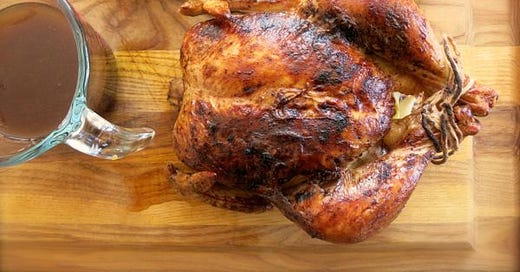Soy and Mirin Glazed Roast Chicken

It took me a little while to find my go-to roast chicken, but once I did, there was no going back. Those of you who have happened upon the recipe (page 287, Dinner: A Love Story) know why: It's low on ingredients, forgiving if you miss a few of those ingredients, and doesn't require changing oven temps or flipping the bird over and back again. It's abo…




